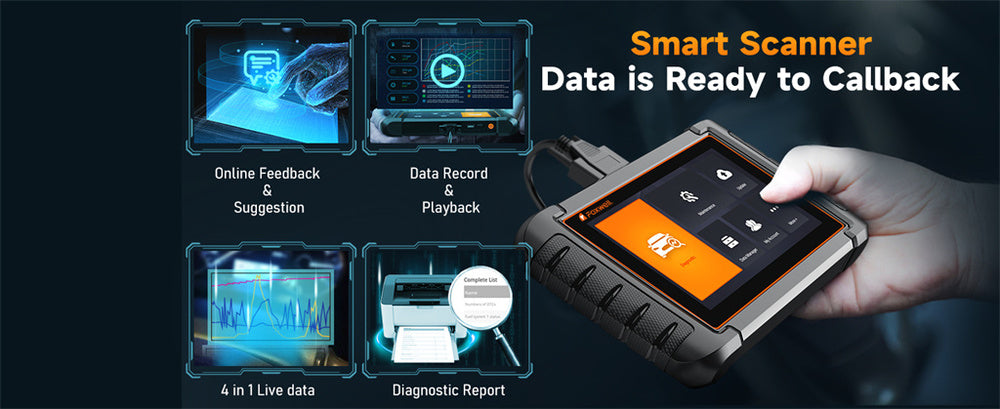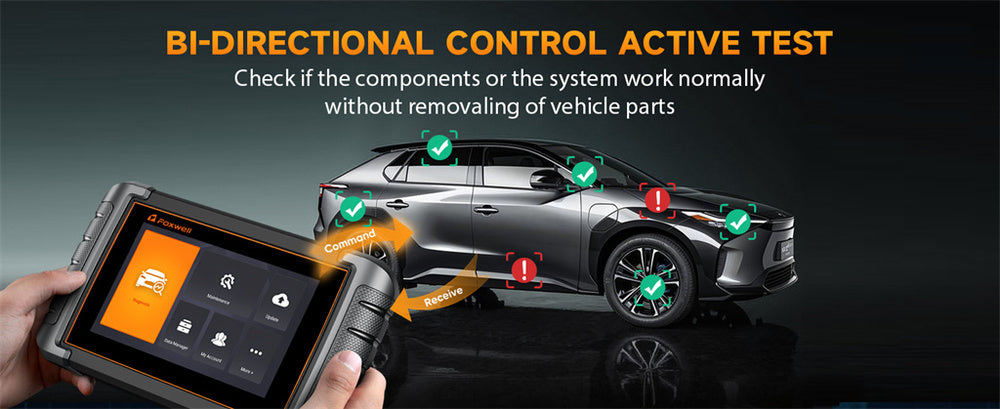Resetting your vehicle’s ECU (Engine Control Unit) is a task that many car owners might consider when dealing with persistent engine lights, performance issues, or after making modifications to their vehicle.
The question often arises: can you reset your ECU with an OBD2 scanner? Here, we’ll explore this topic in depth, covering what type of OBD2 scanner you need, how to perform the reset, the potential risks involved, and alternative solutions if you’re hesitant to do it yourself.
By the end, you’ll have a clear understanding of whether this is a task you can tackle on your own or if it’s better left to the professionals.
Can You Reset the ECU with an OBD2 Scanner?

Yes, you can reset the ECU using an OBD2 scanner, but it's important to note that not all scanners are equipped to handle this task.
Basic OBD2 scanners are generally limited to reading and clearing error codes, which is helpful for diagnosing issues but not sufficient for resetting the ECU.
To reset the ECU, you need a scanner with advanced features designed specifically for this purpose.
Understanding which scanner to use is crucial, as using the wrong tool could lead to incomplete resets or even damage to your vehicle’s electronic systems.
What Type of OBD2 Scanner Do You Need?
To reset your ECU effectively, your OBD2 scanner needs to have several specific features.
First, it should offer advanced diagnostics capabilities that allow access to various vehicle systems beyond the engine, such as transmission, ABS, and airbag systems.
This depth of access ensures the scanner can interact with the ECU to perform the reset.
Secondly, bi-directional control is essential. This feature allows the scanner to send commands to your car’s systems, enabling it to initiate an ECU reset.
Without bi-directional control, the scanner can’t execute the necessary commands for a proper reset.
Wide vehicle compatibility is another important factor.
The scanner should support a broad range of makes and models, as ECU communication protocols can vary between manufacturers.
Ensuring your scanner is compatible with your specific vehicle is crucial.
A user-friendly interface is also important.
An intuitive design makes navigating the scanner’s functions easier, especially if you’re not a professional mechanic.
A clear, easy-to-use interface will help you avoid mistakes during the reset process.
Finally, updatable software is key.
Vehicle technology is constantly evolving, and having a scanner that can update its software ensures it remains compatible with newer vehicles and can perform ECU resets on the latest systems.
How to Reset Your ECU with an OBD2 Scanner
Resetting your ECU with an OBD2 scanner is a task that can be easily done with the right tool, and the Foxwell NT909 is a great example of a scanner that makes this process smooth and hassle-free.
Let’s walk through the steps you’ll need to take, using the Foxwell NT909 as your go-to device.
Plug in the Foxwell NT909: First, locate your car’s diagnostic port, usually found under the dashboard on the driver's side. Plug the Foxwell NT909 into this port. One of the nice things about the NT909 is its durable and easy-to-handle cable, making this step a breeze.
Turn on the Ignition: Switch your car to the “on” position, but don’t start the engine. The NT909 will power up automatically as soon as it’s connected, thanks to its OBD2 port power capability.
Navigate to the Reset Function: The Foxwell NT909 comes with a large, clear touchscreen that makes navigation simple. On the main menu, select the option for “ECU Reset” or “Clear All Data.” The NT909’s intuitive interface ensures you won’t have to dig through confusing menus.
Follow the Prompts: The NT909 will guide you through each step with on-screen instructions. It’s as straightforward as confirming that you want to proceed with the ECU reset. The NT909’s fast processing speed ensures that there’s minimal wait time during this process.
Wait for the Reset to Complete: In just a few minutes, the NT909 will complete the reset, bringing your ECU back to its factory settings. The device will notify you when the process is done, so there’s no guessing involved.
The Foxwell NT909 isn’t just about ECU resets—it’s a professional-grade diagnostic tool that offers real-time data, advanced diagnostics, and even bi-directional control, allowing you to interact with various vehicle systems.
It’s like having a professional mechanic’s toolkit, all packed into one easy-to-use device.
With the Foxwell NT909, not only do you get the power to reset your ECU, but you also gain a comprehensive tool that will help you tackle other vehicle diagnostics with confidence.
Are There Any Risks Involved?
Resetting your ECU does carry some risks. One of the main risks is that it clears all the adaptive learning data the ECU has gathered over time.
This data includes adjustments for fuel efficiency, idle control, and other performance parameters based on your driving habits.
After a reset, your vehicle may not perform as smoothly until the ECU relearns these settings, which can take some time.
Another risk is that an ECU reset can temporarily mask underlying issues. If there are persistent problems, such as faulty sensors or mechanical issues, resetting the ECU might clear the fault codes without resolving the root cause. The problem could reappear later, possibly causing more significant issues if not properly diagnosed.
There’s also the risk of data corruption or communication errors during the reset. If the scanner loses power or connection, the ECU could end up in an incomplete or corrupted state, potentially leading to more severe problems that require professional intervention.
A Better Way to Take Control

If the risks of resetting the ECU with an OBD2 scanner seem too high, or if you're uncomfortable performing the task yourself, there are safer alternatives.
Visit a Professional Mechanic: A professional mechanic can reset the ECU using advanced tools that are specifically designed for your vehicle’s make and model, ensuring the process is done correctly and safely.
Use a Dealer-Level Diagnostic Tool: These tools offer full access to your vehicle’s systems and provide a safer, more precise way to reset the ECU. They are more expensive but provide peace of mind.
Battery Disconnection Method: Disconnecting the battery for 15-30 minutes can reset the ECU by cutting off power, forcing it to reboot. This is a less precise method and might not address the root causes of any issues but can serve as a quick fix.
ECU Reflash by a Specialist: This involves updating or replacing the ECU’s software. It’s more complex but can be a better option if you’re dealing with persistent issues or looking to optimize performance.
Conclusion
Resetting your ECU with an OBD2 scanner is possible, but it’s not without its challenges and risks.
Understanding what type of scanner you need and how to use it properly is crucial. If you’re confident and have the right tools, it can be a straightforward process.
However, if you’re uncertain or worried about potential risks, considering alternative solutions like visiting a professional or using more advanced tools might be the best course of action.
Whether you choose to DIY or seek professional help, being informed about the process will help you make the best decision for maintaining your vehicle’s performance.
FAQs
Can you program ECU with OBD2?
Yes, but only with advanced OBD2 scanners that have ECU programming capabilities. Basic scanners cannot perform this task.
Can I program my ECU myself?
Yes, you can, if you have the right tools and knowledge. However, it's recommended to have professional equipment and understanding of your vehicle’s ECU system to avoid errors.
Can a cheap OBD2 scanner damage an ECU?
Yes, a cheap or poorly designed OBD2 scanner can potentially send incorrect signals or cause communication errors, which could damage your ECU. It's important to use a reliable and well-reviewed scanner.




Leave a comment
This site is protected by hCaptcha and the hCaptcha Privacy Policy and Terms of Service apply.